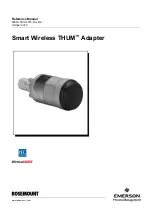
13–Microsoft Virtualization with Hyper-V
Single Network Adapter
164
83840-546-00 E
Single Network Adapter
Windows Server 2008
When configuring a 8400/3400 Series network adapter on a Hyper-V system, be
aware of the following:
An adapter that is to be bound to a virtual network should not be configured
for VLAN tagging through the driver’s advanced properties. Instead,
Hyper-V should manage VLAN tagging exclusively.
Since Hyper-V does not support Jumbo Frames, it is recommended that this
feature not be used or connectivity issues may occur with the child partition.
The Locally Administered Address (LAA) set by Hyper-V takes precedence
over the address set in the adapter’s advanced properties.
In an IPv6 network, a team that supports CO and/or LSO and is bound to a
Hyper-V virtual network will report CO and LSO as an offload capability in
the QCC GUI; however, CO and LSO will not work. This is a limitation of
Hyper-V. Hyper-V does not support CO and LSO in an IPv6 network.
Windows Server 2008 R2 and 2012
When configuring a 8400/3400 Series network adapter on a Hyper-V system, be
aware of the following:
An adapter that is to be bound to a virtual network should not be configured
for VLAN tagging through the driver’s advanced properties. Instead,
Hyper-V should manage VLAN tagging exclusively.
The Locally Administered Address (LAA) set by Hyper-V takes precedence
over the address set in the adapter’s advanced properties.
The LSO and CO features in the guest OS are independent of the network
adapter properties.
To allow jumbo frames from the guest OS, both the network adapter and the
virtual adapter must have jumbo frames enabled. The Jumbo MTU property
for the network adapter must be set to allow traffic of large MTU from within
the guest OS. The jumbo packet of the virtual adapter must be set to
segment the sent and received packets.
Summary of Contents for FastLinQ 3400 Series
Page 286: ......
















































